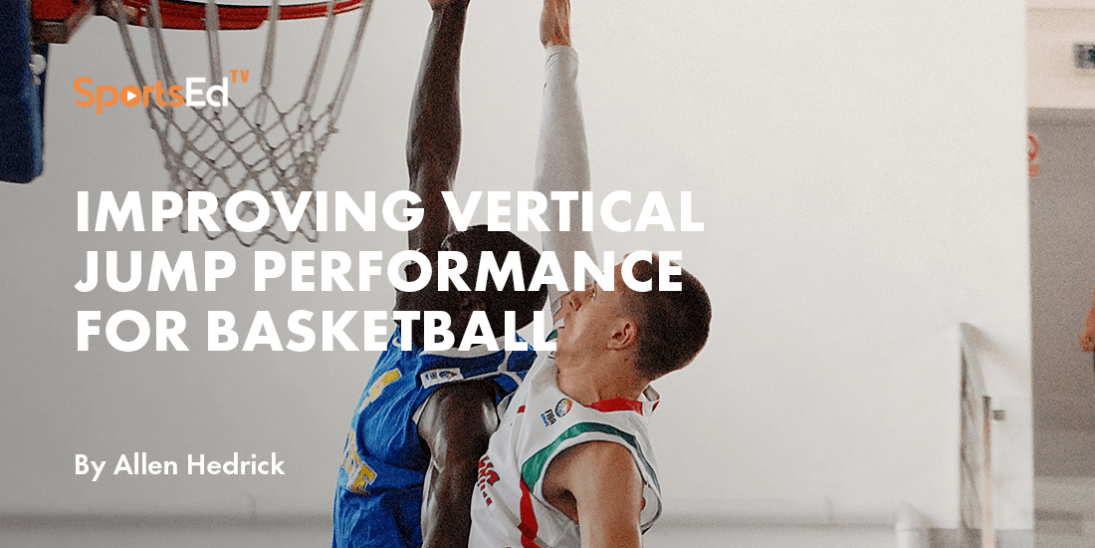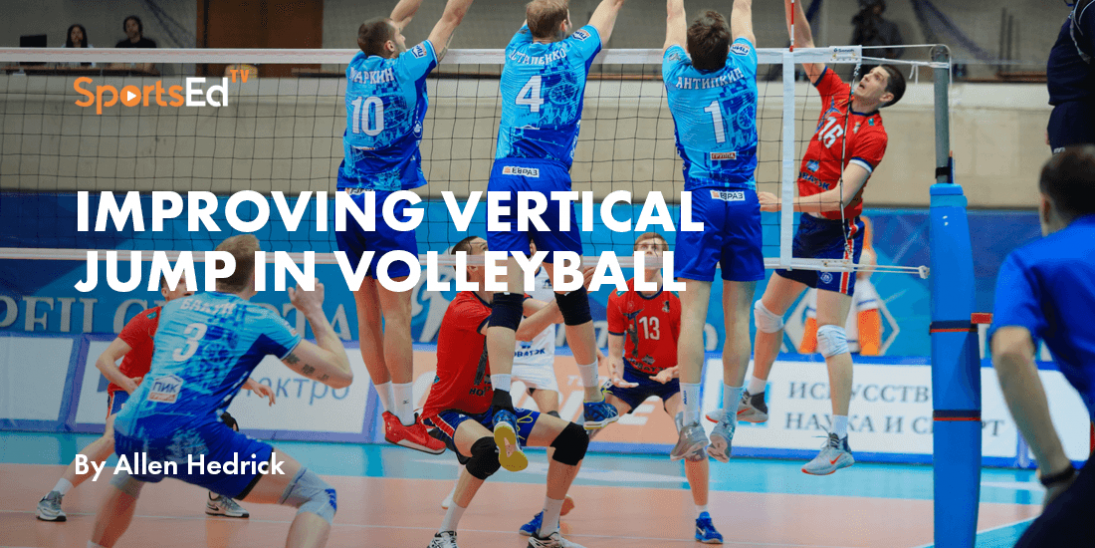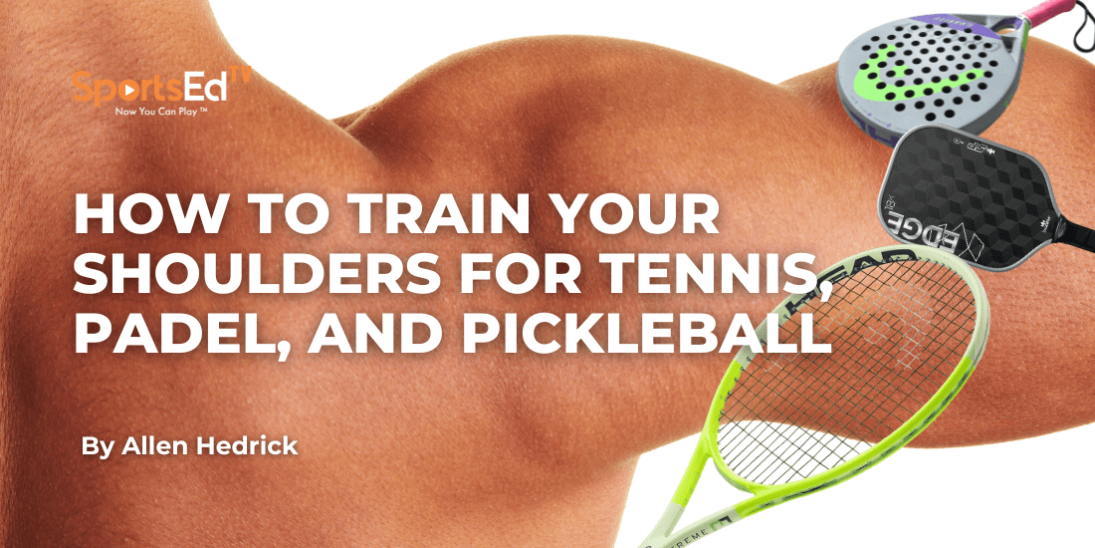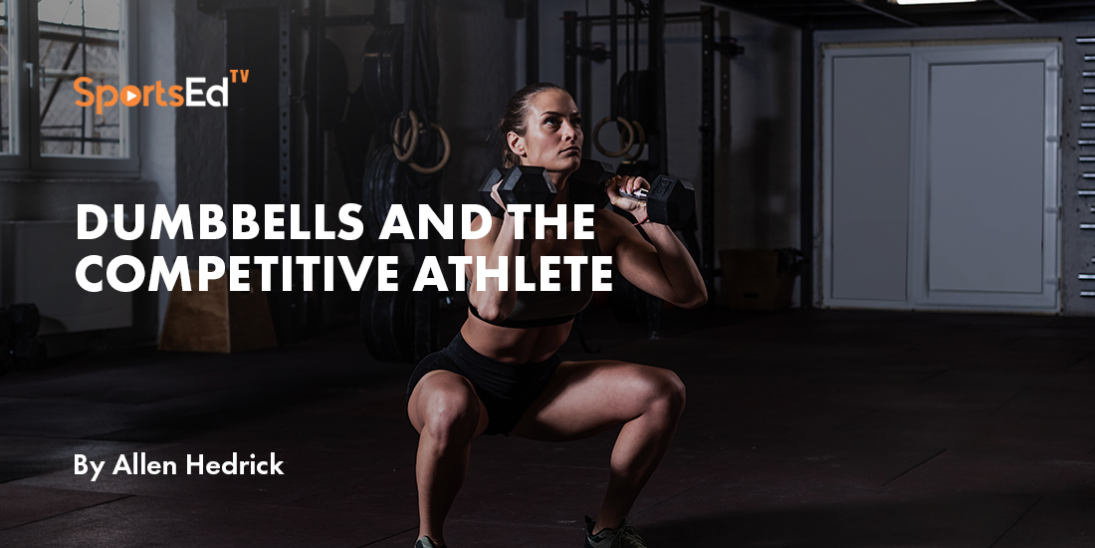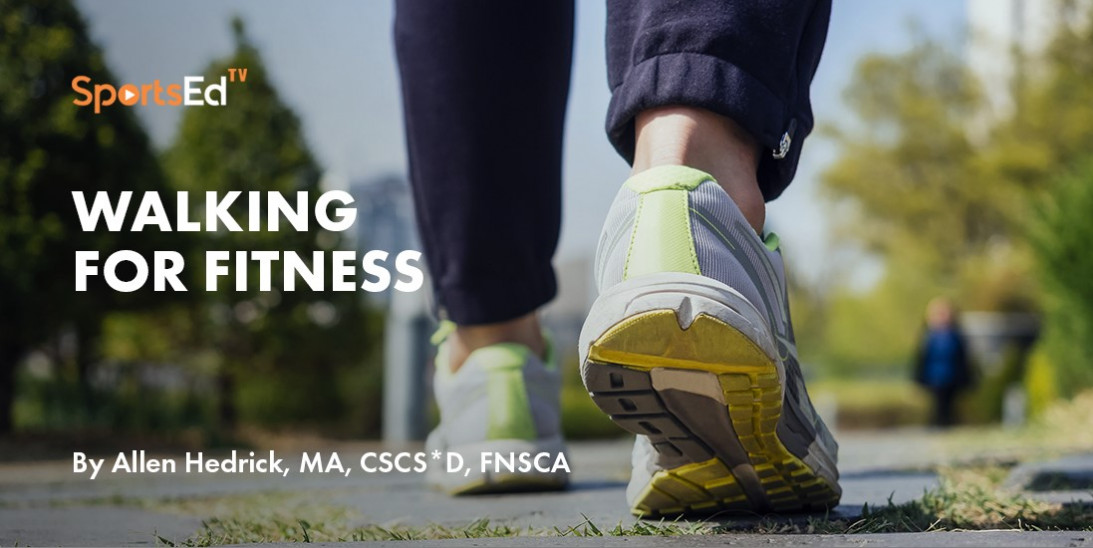Basketball, Martial Arts, Soccer, Strength And Conditioning, Taekwondo, Volleyball
Welcome and thanks for visiting...

Improve your vertical jump
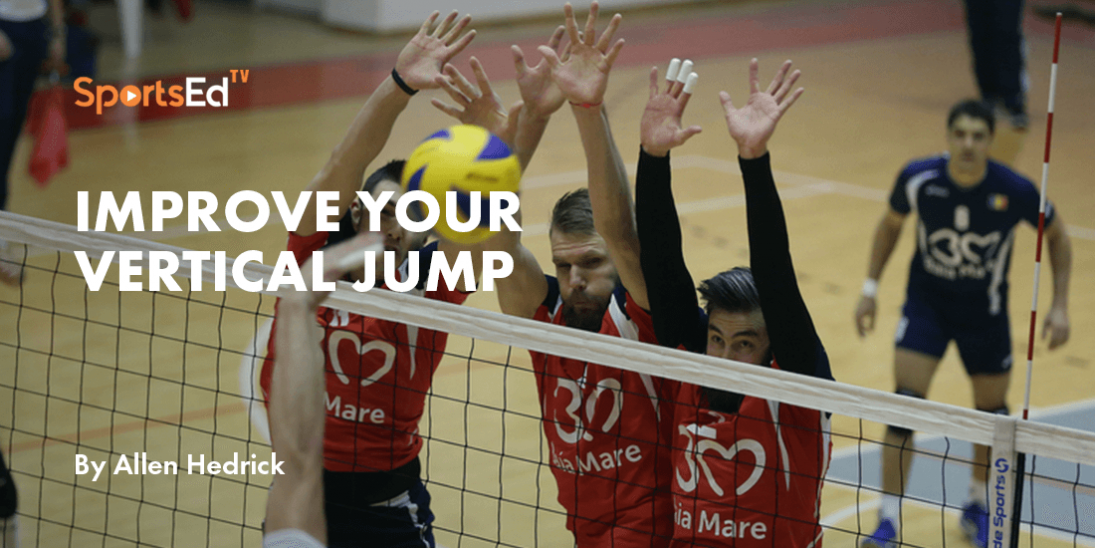
Introduction
This article aims to look at various components of the vertical jump. This is important because vertical jump performance, particularly jump height, is considered an important component for athletic populations (1). Improving vertical jump performance is one of the easiest ways to improve athletic performance because jumping ability translates to many sports (12). There is a correlation between how high you can jump, how fast you can run, and how quickly you can move laterally. It is important to note that vertical jump ability, one of the primary components of athletic performance, is associated with the athletes' muscle power. Indeed, researchers note that athletes with higher muscle power have a better jumping height (10).
Why is the Vertical Jump Crucial for Athletes?
The significance of this is maximal muscle power, or explosive strength, an important performance attribute in a wide variety of sports (2, 10). The ability to generate high levels of skeletal muscle power is a widely recognized predictor of successful sports performance (10). Many coaches use the vertical jump test as an indirect evaluation of leg power (2, 3, 7, 9) and to measure physiological adaptations from training (4). While power and vertical jump ability are not identical, correlations link them to success in a variety of sports
Examining the Countermovement Jump
The countermovement jump is the most common type of vertical jump used when evaluating vertical jump performance (1). This is because the counter-movement jump can distinguish between different levels of training status, provide insight into an athlete’s stretch-shortening cycle capacities, and closely monitor neuromuscular fatigue (1). Further, as noted by Mayberry et al, (9), the countermovement jump test is among the most reliable and valid forms of jump tests for predicting athletic performance and lifting ability.
Natural Abilities vs. Trained Skills in Vertical Jumping
Significantly, without training, the athlete who can jump the highest will generally be the one who is most athletic. This natural ability to jump high is the result of a high proportion of fast-twitch to slow-twitch fibers, a well-developed posterior chain, and an innate ability to move quickly. However, naturally athletic or not, taking part in a well-organized training program can improve vertical jump performance (12).
Important to note is that improving an athlete’s vertical jump performance is an important contributor to performance in various sports (14). One critical consideration is in sports, vertical jump performance can occur in a variety of situations, including a static start, with a countermovement, with an approach, and immediately following landing (14).
Types of Jumps
One thing to be aware of, and not often considered, is that there are various techniques that can be used when performing a vertical jump. Their specific use is based primarily on the setting and/or purpose of the jump. Those methods include squat jumps, countermovement jumps, and depth jumps. A brief review of each of those techniques follows.
Squat Jumps
Squat jumps are vertical jumps performed from a stationary start position from a predetermined depth (14). The arms are held in shoulder extension (arms fully extended with the hands positioned behind the shoulder joint) or with the hands on the lower back. From this position, a quick triple extension of the ankles, knees, and hips in a vertical direction is performed, along with an aggressive arm swing. In a training setting, the squat jump is used to improve an athlete’s force development rate or mimic a movement found in their selected sport. For example, consider a track sprinter starting in a 3-point or 4-point sprint start position or a swimmer exploding off the starting blocks training to improve their ability to develop force as rapidly as possible (14).
Countermovement Jumps
By definition, the countermovement jump is a movement that initially involves a movement in the opposite direction of the intended movement with a brief amortization phase (the time between the lowering phase to the elevating phase in a vertical jump) (14). In a countermovement jump, the athlete begins in a standing, upright position. This is followed by a lowering action of the body using ankle dorsiflexion, knee flexion, and hip flexion. Depending on the goal of the athlete, the length of time between the eccentric and concentric actions will vary, but the final phase of the countermovement jump is rapid muscle contraction of the leg muscle that creates a jumping action. The countermovement jump is a common movement found in a variety of sports, such as a rebound in basketball, blocking at the net in volleyball, or jumping to catch a pass in football (14)
Depth Jumps
Depth jumps are used as a plyometric exercise that specifically makes use of potential energy and the force of gravity to store energy in the muscles and tendons (14). Performing a depth jump involves having the athlete step off an elevated platform, landing, then immediately reversing from a landing position to a concentric vertical upward action (14). Once the athlete contacts the ground upon landing it is critical to immediately redirect the movement vertically while the amortization phase (ground contact time) must be minimal (i.e., <250 milliseconds). Depth jump training is commonly used for improving lower body power and speed. The depth jump uses the elastic properties of the muscles as well as the stretch reflex potentiation of the muscles and nervous system to induce an enhanced training effect.
The Role of Vertical Jumping in Various Sports
With a review of the literature, it will quickly become obvious that vertical jump ability is an important part of performance in a variety of sports. For example, Hedrick (5) pointed out that vertical jump ability is an important part of performance in volleyball. As an indication of this, Martinze (8) noted that volleyball coaches and performance coaches need to work together to develop vertical jump ability because at the elite level, volleyball athletes can perform between 30,000 and 40,000 spiking movements in a single year. Realizing that the average international volleyball career is eight years in duration, typically lasting two Olympic quadrennials, this can amount to between 240,000 and 320,000 vertical jump spikes in a career. Film review from match play reveals that for front-row players, a majority of their efforts in volleyball are maximal or near maximal vertical jumps with and without a running approach, with the exception being the high number of submaximal jump sets performed by setters (8).
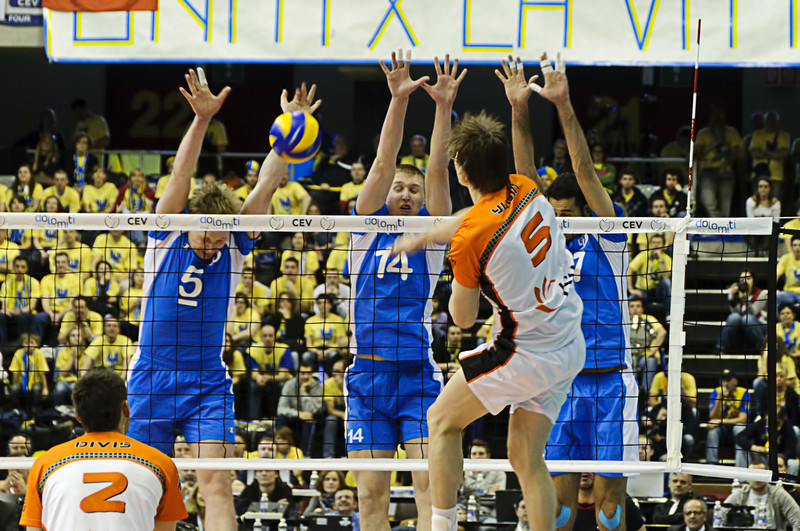
Another sport where vertical jump ability is of obvious importance is basketball. Research reveals that basketball players perform an average of 50 explosive vertical jumps during a game (13). Improving an athlete’s vertical jumping ability is a vital contribution to basketball performance (14). Unlike volleyball athletes, who often use a countermovement vertical jump, basketball players often execute an approach jump vertical jump while performing a layup or dunk.
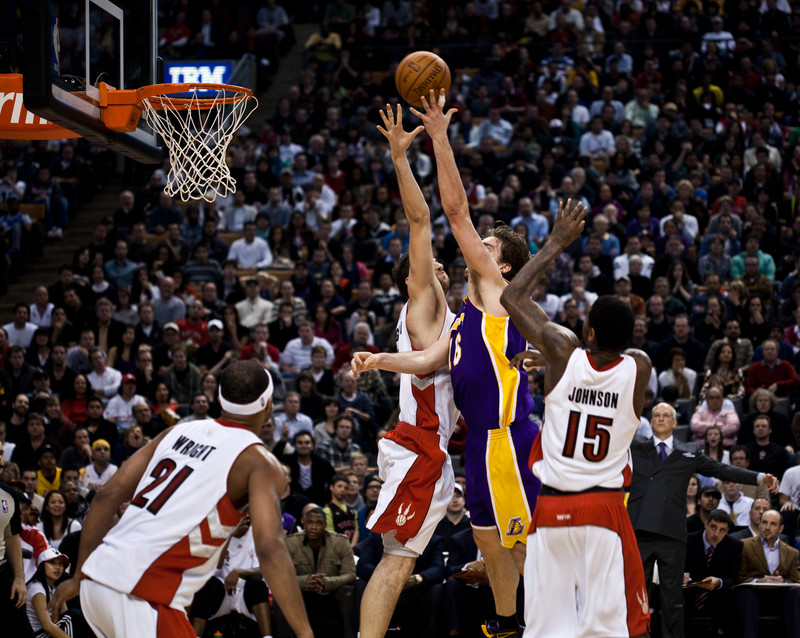
Other sports where the vertical jump was mentioned as being important when reviewing the literature include swimming, soccer, and rugby. Swimming athletes perform an extension of the hip, knees, and ankles, as seen when performing a vertical jump when propelling their body out of the blocks from a static start. A rugby player needs to jump to catch the ball on a pass (14), and soccer players need to jump when heading the ball (11).
Factors Controlling Vertical Jump Height
To a large degree, force production, and thus vertical jump height, will be determined by muscle fiber type (type II versus type I), neurological control, and activation (rate coding, recruitment, and inter- and intramuscular coordination) (14). All of these factors contribute to force production capabilities during a vertical jump, only some of which are affected by training. One example of a trainable component is the increased neural responses to resistance training (14).
All vertical jumps require the use of concentric action of the leg muscles to create the elevation of the body. This concentric muscular action must be both forceful and rapid enough to result in a maximal height. Initial fast and forceful concentric muscle actions need to be at maximum muscular effort as in a ballistic squat to achieve the greatest possible height. As soon as a countermovement is included in the vertical jump technique, vertical jump height will increase. The countermovement action makes use of the stretch-shortening cycle, which takes advantage of the elastic properties of the involved muscle and connective tissue and thus producing a more forceful movement.
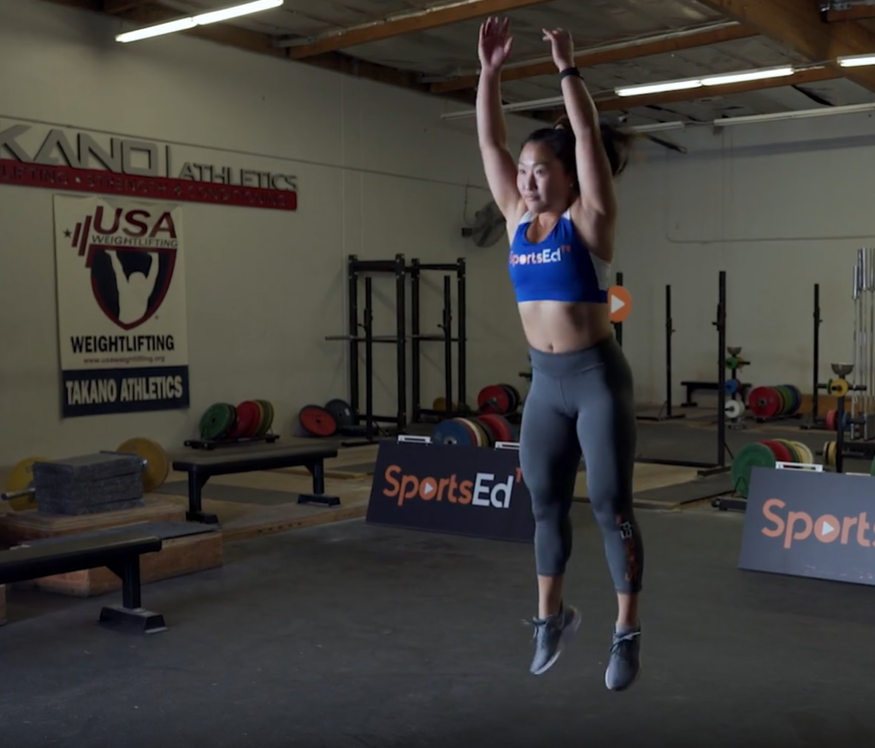
Another way to increase jump height is to take advantage of the benefits an aggressive arm swing can provide during the performance of a vertical jump (5). A study found that arm swing will increase jump height by as much as 28 percent and velocity by 72 percent at take-off (12). It was noted that arm swing enhances vertical jump performance by shifting muscle activation to the posterior chain from the quads, resulting in greater work done by the posterior chain. Research shows that when athletes try to jump as high as they can, the range of motion at the shoulder increases, and there is more activation of the shoulder and upper arm muscles, effectively “pulling” the rest of the body upwards (12).
Maximizing Vertical Jump Through Training
Training to improve vertical jump performance generally falls into three broad categories: slow speed strength training (e.g., squats, straight leg deadlifts), explosive training (e.g., cleans, jerks, jump squats, plyometrics), or complex/combined training that involves a mixture of both resistance training and plyometric activities.
Researchers looking for the ideal training methodology to improve jump performance have suggested various approaches to such training (11). However, the ideal mixture of strength training and power training remains a question mark. Obviously, it depends on a variety of factors, including the training background of the athlete and the demands of the sport the athlete is training for.
Strength Training
Focusing training on increases in strength can result in improvements in vertical jump performance in untraining subjects with low initial strength levels (11). The improvement in jump height as a result of increasing strength is much more significant in subjects with an initial low value than in strength-trained athletes (11). Once a base level of strength has been developed, further increases in strength do not result in meaningful increases in jump height.
For example, a study found a 7-week squat program improved vertical jump performance by an average of 3.3 cm (4). However, a program consisting only of squats is not considered to be the best approach to improving vertical jumps because of the slow, monotonous movement pattern. Part of the reason for this is that with the powerlifting movements, as performance increases, power decreases because the movement speed slows down (4). Paoli et al. (11) are in agreement with this, noting that in both developing and testing, maximal strength results in low acceleration values. This is because as strength levels increase, movement speed decreases, resulting in significant decreases in power output.
It was pointed out that in addition to improving squat performance, a way to enhance vertical jump height is to train the group of muscles known as the posterior chain (erector spinae, glutes, and hamstrings) (12). The entire posterior chain benefits from multiple joint exercises such as high bench step-ups, reverse hyperextensions, and multiple forms of Olympic pulls. The focus should be on multiple-joint exercises rather than single-joint exercises like leg curls for the hamstrings. This is true because single-joint exercises don’t transfer effectively to improve athletic performance. Single joint exercises should only be used if more time is available for training because they can help for the long-term development of the vertical jump. (12)
It is important to realize that these decreases in movement speed and power, while still present, occur at much lower levels in the weightlifting movements (e.g., cleans, snatches, jerks) than in typical strength and powerlifting movements (e.g., squat, bench, deadlift). Paoli et al. (11) explain that power is the result of force and velocity: the higher the force, the lower the velocity of concentric muscle action. This contradicts what is required in athletics, where the force development (RFD) rate is much more important than strength alone (11).
It is important to realize that this does not suggest that developing strength should be ignored. While enhancing velocity is obviously desirable, force (strength) also influences power (2). As a result, subjects who complement power training with strength training display greater improvements in vertical height and power output than those who train for power alone.
When training to improve power, it is important to remember that most strength training be performed with an attempt to perform each repetition at maximal velocity (2). Training programs utilizing both a high force and high-velocity emphasis provide the most effective impetus for improving power output. An approach supplementing standard resistance training (e.g., weight plates) with modes that provide variable resistance (e.g., elastic bands or chains) seems of value because it may lead to improvements in mean and peak velocity, rate of force development, and peak force and power. Performing a maximal vertical jump requires both strength and power. As a result, a two-pronged training approach seems to be more effective than a single approach because it provides stimulation for the development of both strength and power (2).
Power Training
As just discussed, focusing strictly on increasing strength when the goal is to enhance vertical jump performance or any power-orientated performance is not the most effective approach. Explosive strength is a requirement for success in most athletic movements, including the vertical jump (11). While the relationship between jumping (or any explosive activity) and power is clear, the best approach for improving vertical jumping with the use of power training activities remains uncertain (2).
One commonly used method when the goal is to increase power is an emphasis on the performance of the weightlifting movement (e.g., cleans, snatches) and their variations (e.g., hang power cleans, hang snatch high pulls) (10). These explosively performed exercises may be more effective for developing power and rate of force development compared with low-velocity traditional strength training movements like squats and deadlifts (10). Another benefit of the weightlifting movement, in contrast to the powerlifting movements (e.g., squat, bench, deadlift), is that movement speed, and thus power development, decreases very little as the load on the bar increases. This is in direct contrast to the powerlifting movements, where both bar speed and power decrease dramatically as the load increases.
However, while the weightlifting movements and their variations are effective for improving lower-body maximal power and rate of force development, performing the movements with good technique requires excellent coaching and ample practice of the exercises (10). As a result, some coaches are unwilling or unable to spend the necessary time to teach the full weightlifting movements (10). This is due to the fact that coaching the hang position, the scoop, and the second pull requires coaching several progressive steps that can be difficult in a large group setting.
In these situations, to reduce the skill requirements of performing the full weightlifting movements, the snatch and clean movements can be modified by removing the catch phase to focus fully on the pulling portion of the exercise. For example, the hang high pull is a variation that is similar to the traditional power clean. By starting from a hang position and eliminating the catch on the shoulders, the movement becomes easier to perform and learn as compared with the full weightlifting movements, and the athletes can enjoy the benefits of the weightlifting movements without performing the full movement (10).
Beyond performing hang clean or snatch pulls, another potential alternative to the full weightlifting movements are weighted jumps, either using a traditional barbell or a hex bar (10). While there have been limited studies comparing jump improvements resulting from the use of weightlifting derivatives or jump squats there seems to be no difference in performance improvements between these two approaches (10).
In addition to having a shorter learning curve as compared to the weightlifting movements, loaded jumps require neither platforms, bumper plates, or weightlifting bars for safe execution, which makes them a more feasible choice for those coaches and athletes who train in facilities that do not have this equipment. As a result, while requiring both less specialized equipment and coaching time, current research suggests that loaded jumps can be as effective as weightlifting movements for improving vertical jump (10).
Plyometrics
Plyometric training is another training method that can be used to improve vertical jump performance (6). Multiple studies have shown that plyometric training can positively affect hip and thigh power specific to the vertical jump. This occurs because performing plyometric training causes the body to optimally use the stretch-shortening cycle to produce power (12). It is important to realize that, similar to resistance training, movement-specific plyometric drills should be chosen to increase jump height. When training to improve vertical jump, plyometric drills must be selected based on their movement specificity to vertical jumping (6).
The usefulness of using plyometrics as a way to increase jump height was demonstrated a large-scale review published in the British Journal of Sports Medicine (12). This study looked at 26 studies evaluating the effect of plyometrics on vertical jump performance. Results showed that plyometrics can increase vertical jump height between 7.5 to 8.7 percent. Further support was provided in a study published in the Journal of Sport and Health Research. In this study the effect of a high-intensity plyometric training program on vertical jump performance was evaluated (12). Subjects in this study increased vertical jump by an average of 23 percent. It is also important to note that improvements in 20-meter sprint speed, agility and balance were also seen. The gains were due to improved neuromuscular function and muscle coordination. Additionally, awareness of joint position and motion were also enhanced. While this joint position awareness would be a benefit to all athletes, it would be of special value to those with awkward or rigid movement patterns (12).
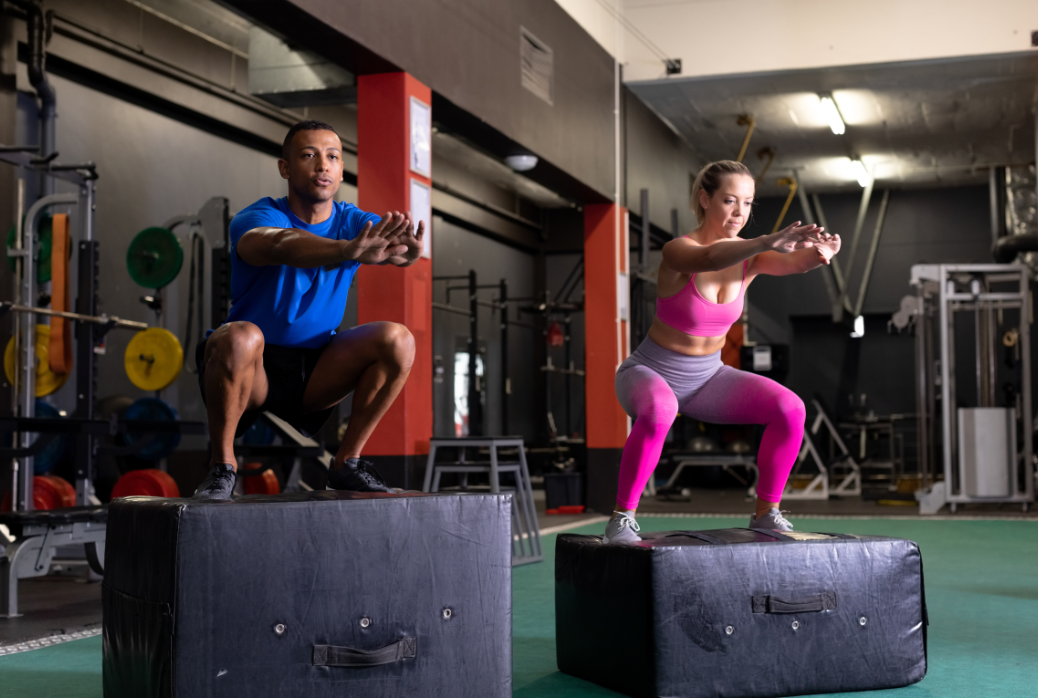
Combined Approach
Although resistance training and plyometric training have been found individually effective at improving vertical jump performance, the results can be optimized when both training methods are combined (4, 6). Oranchuk et al. (10) was in agreement, noting that several studies have found that the combination of resistance training and plyometrics is the most effective method for improving force, power, and velocity. This is likely because both sides of the force-velocity curve are stimulated when performing both resistance training (high force/slow velocity) and plyometric training (low force/high velocity) (10).
As explained by (13), the advantage of this combined approach is that an athletic movement such as jumping is associated with different adaptation processes. Performing a low-intensity plyometric activity (e.g., box jump) after a high-intensity resistance training activity (e.g., squats) results in stronger muscle contractions (13). As further explained by (2), a review of the literature indicates both jumping-specific (e.g., plyometrics) and non-jumping–specific (e.g., resistance training) methods uniquely enhance power and jumping ability. In more detail, low-intensity/high-speed movements like plyometrics improve velocity, whereas high-intensity/low-speed movements like heavy squatting promote force production. Further, the use of weightlifting movements enhances both force and velocity qualities. As a result, optimal programming will include a highly variable combination of training modalities and loading paradigms planned around athlete-specific strengths and weaknesses (2).
Conclusion
Vertical jump ability is an important part of many types of athletic performances. As a result, having the information to provide you with the optimal methods to enhance jumping performance can be of significant value. This article aims to provide you with that information so that, as either a coach or athlete, you can improve your training methods to achieve the desired goal. When you train hard and train smart, the results are always optimized.
References
- Comyns, T.M., Murphy, J., and O’Leary, D. Reliability, usefulness, and validity of field-based vertical jump measuring devices. Journal of Strength and Conditioning Research 37(8):1594-1599, 2023.
- Darmiento, A., Galpin, A.J., and Brown, L.E., Vertical jump and power. Strength and Conditioning Journal 9(4)34-48, 2012.
- Dobbs, C.W., Gill, N.D., Smart, D.J. and McGuigan, M.R. Relationship between vertical and horizontal jump variables and muscular performance in athletes. Journal of Strength and Conditioning Research, 29(3):661-671, 2015.
- Hedrick, A. and Anderson J. The vertical jump: A review of the literature and a team case study. Strength and Conditioning Journal 18(1):7-12, 1996.
- Hedrick, A. Training for high level performance in women's collegiate volleyball part I: training requirements Strength and Conditioning Journal 29(6):50-53, 2007.
- Hedrick, A. Training for high-level performance in women’s collegiate volleyball: part II: training program. Strength and Conditioning Journal 30(1):12-21, 2008.
- Kons, R.L., Ache-Dias, J., DeTanico, D., Barth, J., 1 and Dal Pupo, J. Vertical jump height an indicator of athletes’ power output in different sport modalities. Journal of Strength and Conditioning Research 32(3):708-715, 2018.
- Martinez, D.B. Consideration for power and capacity in volleyball vertical jump performance. Strength and Conditioning Journal 39(4): 36-48, 2017.
- Mayberry, J.K., Patterson, B, and Wagner, P.I. Vertical jump profiles through prescribed movement plans. Journal of Strength and Conditioning Research 32(6): 1619-1626, 2018.
- Oranchuk, D.J., Robinson, T.L., Switaj, Z.J., AND Drinkwater, E.J. Comparison of the hang high pull and loaded jump squat for the development of vertical jump and isometric force time characteristics. Journal of Strength and Conditioning Research 33(1): 17-24, 2019.
- Paoli, A., Bianco, A., Palma, A., and Marcolin, G. Training the vertical jump to head the ball in soccer. Strength and Conditioning Journal 34(3):80-85, 2012.
- 12. Poliquin® Editorial Staff Ten tips to help increase your vertical jump. Retrieved July 2023 from https://poliquinperformance.com/blogs/blog/ten-tips-to-help-you-increase-your-vertical-jump.
- Uysal, H.Å., Dalkiran, O., Korkmaz, S., Akyildiz, Z., Nobari, H., and Clemente, F.M. The effect of combined strength training on vertical jump performance in young basketball players: A systematic review and meta-analysis. Strength and Conditioning Journal, Jan 2. 2023.
- Waller, M., Gersick, M., and Holman, D. Various jump training styles for improvement of vertical jump performance. Strength and Conditioning Journal 35(1): 82-89, 2013.




